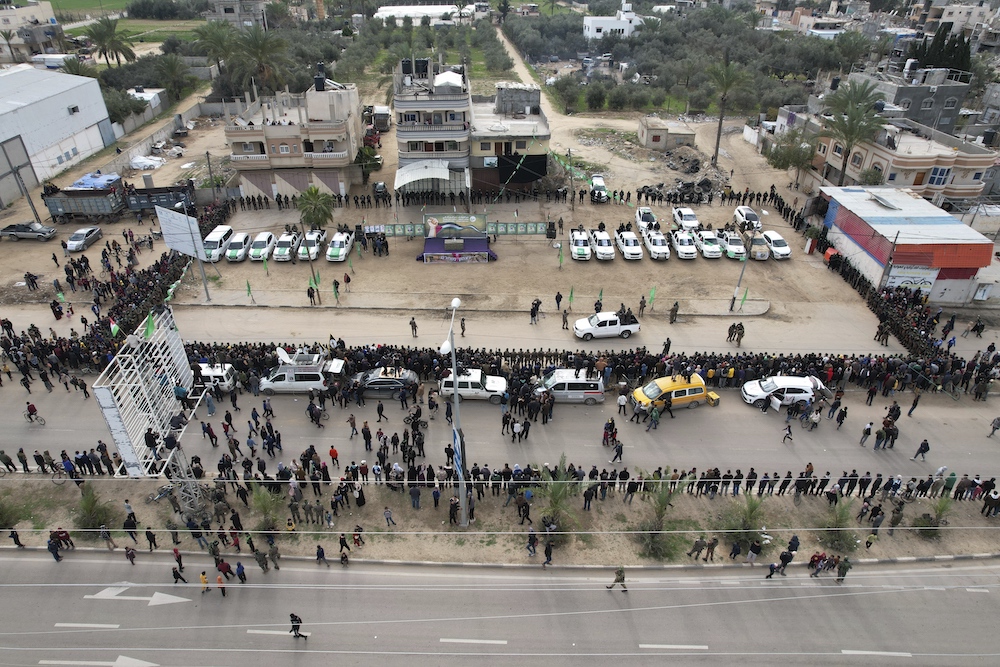CAIRO: Rights activists and local responders said scores of civilians had been killed at sites across Sudan in the past week as the army escalates air strikes nearly 18 months into its war with the paramilitary Rapid Support Forces.
While the RSF controls almost half of the country, the army has recently deployed its superior air power to help it regain some territory in the capital Khartoum, and to pound other areas occupied by its rivals.
Sudan’s war, which erupted from a power struggle between the army and the RSF ahead of a planned transition to civilian rule and free elections, has already created the world’s largest displacement crisis and caused famine.
Emergency Lawyers, a Sudanese human rights group, said hundreds of people had been killed in such strikes across the country. It did not state the period of time for that casualty toll but said it demonstrated “the armed forces’ indifference to protecting defenseless civilians.”
In Hasaheisa, a town in El Gezira state south of Khartoum where the RSF has stationed many fighters, airstrikes killed or injured over 100 people on Monday, Emergency Lawyers said.
An activist from the area said at least 38 people were killed, mostly children. He shared video with Reuters of the aftermath of the strike appearing to show a residential area.
In the North Kordofan town of Humrat Alsheikh, west of Khartoum, an airstrike on Oct. 5 killed 30 people and injured more than 100, Emergency Lawyers said, posting a video that appeared to show a market that had been hit.
Reuters could not independently verify the footage in either video.
A day earlier, a strike that hit another market in Al-Koma in North Darfur killed 61 people, according to the local emergency response room. Those killed included 13 children, UN agency UNICEF said.
The army, which did not immediately respond to a request for comment, has accused the RSF of occupying civilian homes and launching attacks from civilian areas. The RSF denies using civilians as human shields.
FIGHTING LIKELY TO INTENSIFY
Yale Humanitarian Lab, which monitors the war in Sudan, said the army had also carried out a significant campaign of bombardment in RSF-controlled areas of Al-Fashir, a North Darfur city that the paramilitary has besieged for months.
The army’s advance in the capital, which began in late September, has also led to reported casualties. Radhouane Nouicer, Sudan expert for the UN High Commissioner for Human Rights, expressed alarm at reports, some of which circulated on social media, of the summary execution of 70 young men by forces allied to the army in Bahri, part of the greater capital region.
Fighting is expected to intensify with the end of rains that had halted the RSF’s advance in southeast Sudan. The RSF’s leader called on troops to report to their units and said they were prepared to fight on for years.
Overall death tolls from the war are highly uncertain due to the collapse of health and government services, and lack of access for aid workers. Both sides have received material support from external supporters.
“The uptick in fighting and reported civilian casualties and damage to infrastructure are all happening while more weapons are finding their way to the warring parties,” said Mohamed Osman of Human Rights Watch.
Activists report spike in mass civilian deaths after Sudan’s army ups airstrikes
https://arab.news/2yuta
Activists report spike in mass civilian deaths after Sudan’s army ups airstrikes

- Emergency Lawyers, a Sudanese human rights group, said hundreds of people had been killed in such strikes across the country
- It did not state the period of time for that casualty toll but said it demonstrated “the armed forces’ indifference to protecting defenseless civilians“























